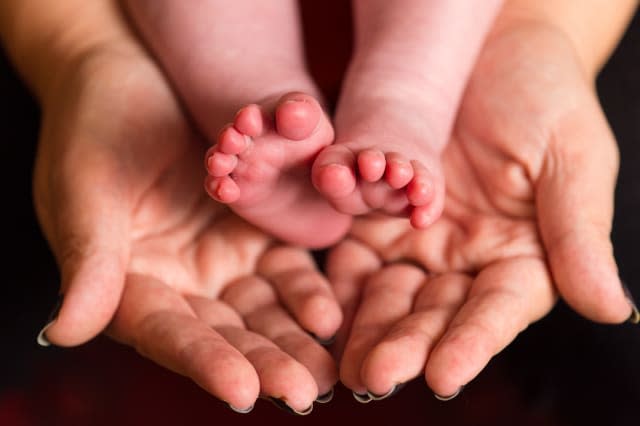Percentage of births to non-UK-born mothers reaches record high

A record percentage of births in England and Wales last year were to non-UK-born women, official figures show.
In 2017, more than one in four live-born babies had mothers who were born outside the UK.
The percentage, 28.4%, was up slightly from 28.2% in 2016, and the highest since 1969 when information on where parents were born was first collected at birth registrations.
Just over a third (33.9%) of babies born in England and Wales last year had at least one parent born outside the UK.
In England, Brent had the highest percentage of births to non-UK-born mums in 2017, while Cardiff had the highest percentage in Wales. The lowest percentage was in Redcar and Cleveland in England and Torfaen in Wales https://t.co/qKzIq7uXtipic.twitter.com/fYH0blv4CO
-- ONS (@ONS) August 23, 2018
The Office for National Statistics (ONS) said Poland has been the most common country of birth for mothers born outside the UK since 2010, with 10.8% of non-UK-born mothers in 2017 born in the country.
Pakistan has been the most common country of birth for fathers born outside the UK since 2008, accounting for 10.2% of non-UK-born fathers last year.
Brent in north London was the local authority area with the highest percentage of live births born to non-UK-born women, at 75.7%, while Redcar and Cleveland in the North East had the lowest (3.7%).
Nicola Haines, of the ONS, said: "Just over a third of the babies born in England and Wales in 2017 had at least one parent who had been born outside the UK.
"This will include parents who moved to the UK as children and have lived here most of their lives as well as those who have recently migrated.
10.8% of non-UK-born mothers that had a child in England and Wales in 2017 were from Poland, while 10.2% of non-UK born fathers were from Pakistan https://t.co/HzwT8Sr7Bhpic.twitter.com/jo7iZUHVI9
-- ONS (@ONS) August 23, 2018
"The proportion of live births to non-UK-born parents has been growing since 1990 and is now the highest on record.
"Our birth statistics also show that since 1975, babies born to mothers aged 45 years and over have been most likely to have a mum who was born outside the UK.
"This is influenced by the proportion of non-UK-born women of childbearing age in the population, which is higher at ages 30 years and over than at younger ages."
The numbers of live births to both UK-born and non-UK-born mothers were down slightly year-on-year.
In 2017, there were 486,417 to women born in the UK and 192,651 to women born outside the UK, decreasing by 2.7% and 1.8% respectively compared with 2016.


